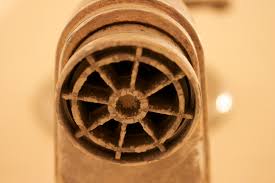A short history of water softeners
 Water softeners have been in existence in one form or another for almost 100 years. They were developed to treat hard water or hardness-a name derived from machinists in the early 20th century complaining that it was hard to make the soap solution used for cooling metals as they were being cut or formed in certain localities. The term soft water as produced by a water softener was used because soft is the opposite of hard.
Water softeners have been in existence in one form or another for almost 100 years. They were developed to treat hard water or hardness-a name derived from machinists in the early 20th century complaining that it was hard to make the soap solution used for cooling metals as they were being cut or formed in certain localities. The term soft water as produced by a water softener was used because soft is the opposite of hard.
Today many of the older softening water technologies have become part of history and current water softeners are built around ion exchange resin. This material is usually referred to simply as resin and is made from two materials-styrene (88-92%) and di-vinyl benzene (8-12%). The components of hardness are primarily calcium and magnesium with the main culprit being calcium which creates scale in water heaters, pipes and appliances along with soap curd rings and poor performance of soaps, detergents and shampoos. Water softeners rely on exchanging calcium and magnesium for a more application friendly material such as sodium or potassium from salt packaged for this application.
The above describes the heart of water softeners with various manufacturers and assemblers utilizing water softener designs to minimize salt and waste water use, provide consumer information through elaborate electronics and employ some distinctive appearance features. Important for the customer when contemplating a water softener purchase is to select one where repair parts are available from more than one source (yes, service is sometimes needed in the expected 15-20 year life of a water softener) and be skeptical of claims for water treatment beyond water softening–most are water softeners and do not cure bacterial issues, remove harmful elements or enhance water in any way. If it sounds too good to be true than it probably is.
#WaterSoftener #VibrantWater #WaterFiltration
